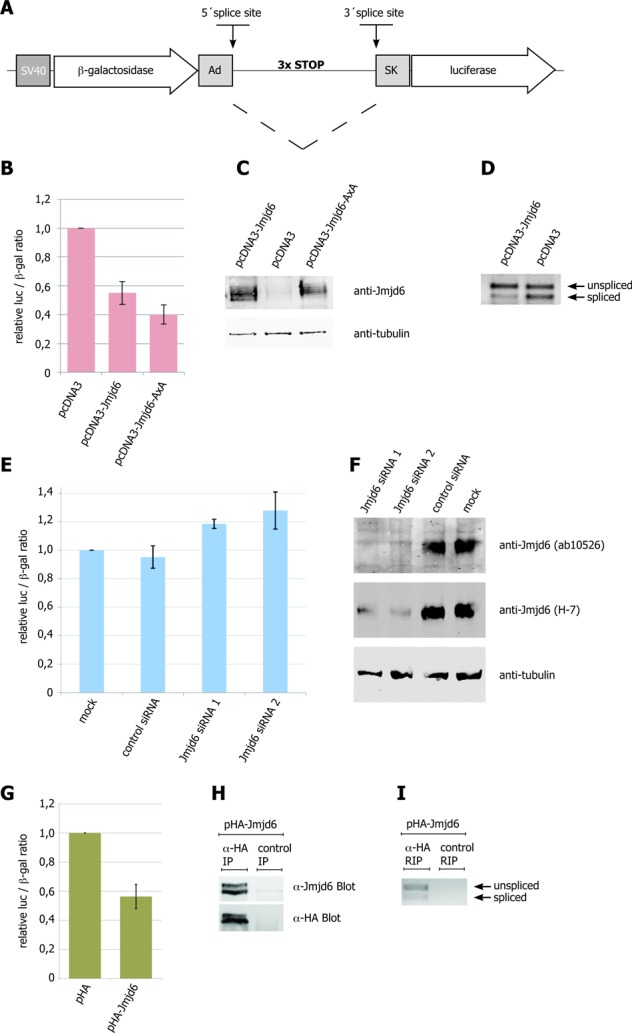Figure 9.

Jmjd6 abundance affects constitutive pre-mRNA splicing. The double-reporter splicing assay has been described previously (31). The pTN24 plasmid carries a β-galactosidase (β-gal) and a luciferase (luc) gene in frame, but separated by an intron. This intron encodes three translational stop codons (in-frame). The splice-site sequences are based on the genes encoding adenovirus (Ad) and the skeletal muscle isoform (SK) of human tropomyosin. Efficient splicing removes the translational stop codons and results in a fusion protein of both reporter genes, β-gal and luc. Plasmid is shown schematically in (A). Activities of luc and β-gal proteins have been measured after transient transfection of either pTN24 and pcDNA3-Jmjd6 or pTN24 and pcDNA3-Jmjd6-AxA or pTN24 and empty pcDNA3 plasmid in HeLa cells. Jmjd6 overexpression results in a decrease of splicing of the reporter mRNA, as seen in a decrease of luc activity (B). The same effect has been observed upon overexpression of a potentially enzymatic inactive Jmjd6 H187A&D189A variant (B). RT-PCR analysis confirmed the shift to an unspliced mRNA upon overexpression of Jmjd6 (D). Amounts of Jmjd6 protein in cells have been confirmed by western blot with anti-Jmjd6 antibody (C). siRNA-mediated knock-down of Jmjd6 increases splicing activity (E). Efficient knock-down of Jmjd6 protein has been detected by western blotting with anti-Jmjd6 antibody (F). Transient expression of HA-tagged Jmjd6 in HEK 293T cells resulted in a similar decrease of splicing of the reporter gene as observed with untagged Jmjd6 (G). HEK 293T cells transiently transfected with pTN24 and pHA-Jmjd6 were used for RNA-immunoprecipitation with either anti-HA or isotype specific control antibody. Specific immunoprecipitation of HA-tagged Jmjd6 was confirmed in western blots with anti-Jmjd6 or anti-HA antibody (H). Co-immunoprecipitation of reporter gene mRNA (spliced and unspliced) has been shown by RT-PCR (I). Error bars represent standard deviation of three independent experiments.
